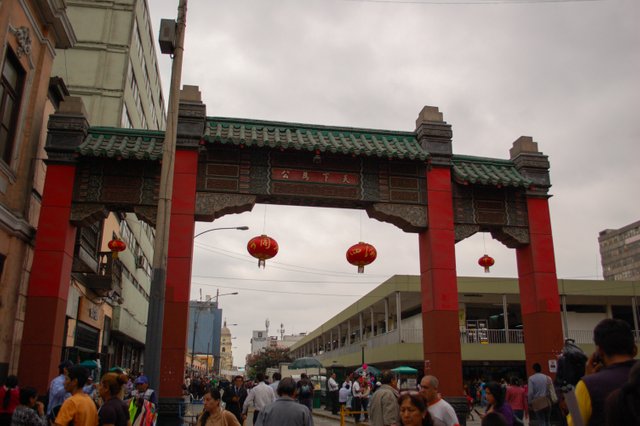
Being a BBC (British Born Chinese) I've always been interested to explore different Chinatowns around the world. Its a great place to learn about Chinese diaspora, to see how people originating from the same place end up at different corners around the world, and how their lives have develop throughout the years.
身為一個土生土長英國華人,當我到外地旅行時都喜歡到當地的唐人街逛逛, 了解各地華人不同的生活發展及環境。
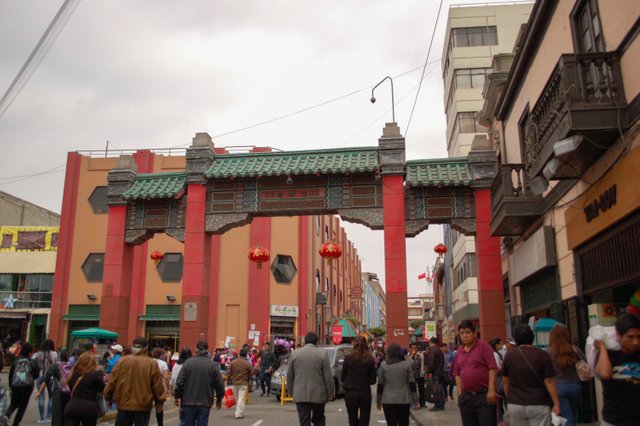
The Barrio Chino (it literally translates to neighbourhood Chinese) is located across several blocks in the historical area of central Lima. After slavery was abolished in the mid 19th century, over 100k Chinese went to Peru to work at the sugar plantations. Since then China town has built up and evolved to its present day form. In the 170 years that have gone by, these first generation immigrants, or rather their descendants have settled in Peru integrating into the Peruvian society. Chinese Peruvians now account for approximately 5% of the population and they have even produced 2 former Prime Ministers! In that respect, they have done a lot better the the Chinese in UK as we only selected our first ever Chinese Member of Parliament in 2015.
在19世紀中期中國南方有超過十萬華人到秘魯工作, 所以這裏的唐人街已有超過170年歷史。 現今秘魯華人後代以融入社會,佔整個國家大概5%人口, 而且更出過兩位前總統。 這方面的成就比英國更大,因為我們在2015年才選了第一位華人議員。
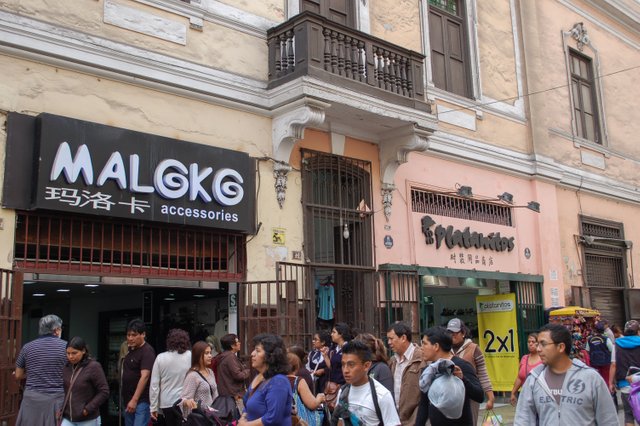
Walking around China town in Lima is a bit like walking around Chinatown in London some 20 to 30 years ago (yes I still remember those days). All the buildings and signs in China town seemed so yesteryear. I went inside this supermarket which was simply called Hong Kong Market. It sold a lot of traditional food stuffs, many which I remember seeing in China town in London when I was a kid. I think maybe nowadays, London China town stocks a lot of locally produced Chinese groceries, or those imported from Japan and Korea such as sauces and noodles etc, as the eating habits are quite similar and their products are perceived to be of better quality. However this hasn't caught up in Lima yet, and a lot of their groceries are still the original brands that we used to buy in England. Very nostalgic.
利馬的唐人街像英國倫敦20/30年前的唐人街, 大樓招牌都比較古舊。 雜貨店內賣的食物品牌有很多是我兒時在唐人街見過。不像現今倫敦唐人街售賣很多自家品牌或從日韓進口食物。
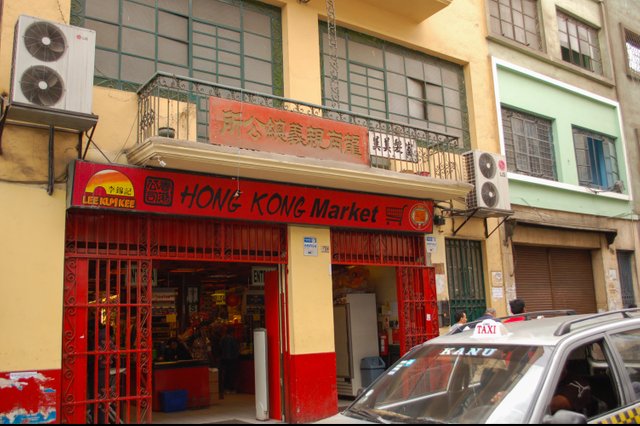
There were a lot of other shops around the area and what I found quite interesting were their shop names, or rather the lack of it. All the shops sold what was on the tin, simple and direct. Creativity seemed to be a bit lacking, or perhaps it didn't matter because not many people know Chinese, so all they had to do was to write a few Chinese words on the sign to make it look like a Chinese owned shop .
其他商店有賣各式各樣的貨物。門外並沒有中文招牌,只是簡單寫上售賣貨品的名稱,例如氣球,製鞋業,運動鞋等等。非常簡單。
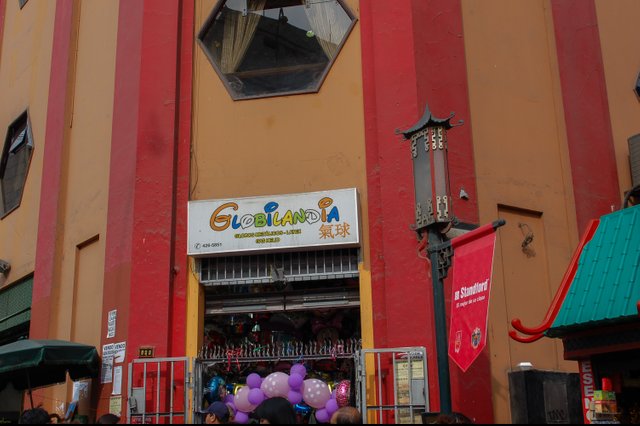
For example, this shop just says Balloons on the bottom right of the sign
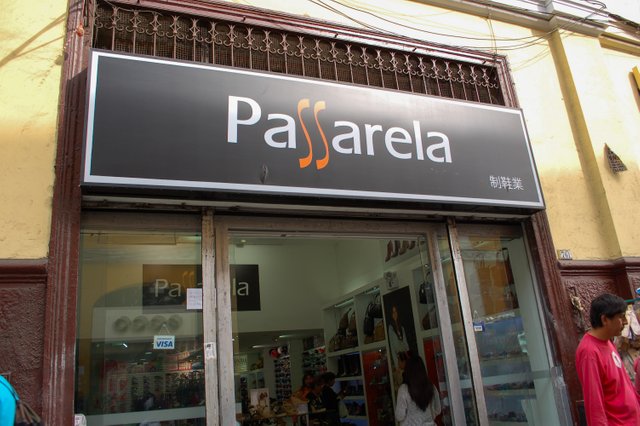 This one says shoe manufacturer
This one says shoe manufacturer
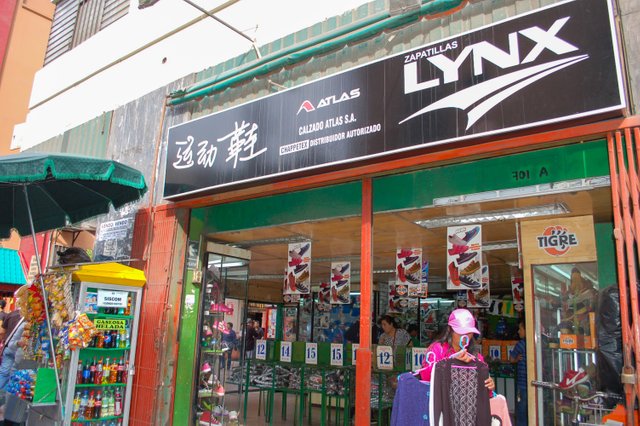 And this one says sports shoes
And this one says sports shoes
Benevolent societies and clan communities were essential in the early days to provide support for the immigrants when they arrived to the unfamiliar country. The Cu Con Chau is probably the most established one and was founded in 1867 by immigrants from Guangdong in southern China. I was quite surprised to see this building bang in the middle of Lima China town, it looked a bit out of place yet you couldn't fault it for being here. The building is built a bit like a traditional Chinese temple and the red sign and blue decor meant you couldn't really miss it. When I peeped though the gates I saw a big Chinese god on the altar. Unfortunately it was closed to visitors and I couldn't go inside.
同鄉會是唐人街不可缺少的機構。早年到陌生 環境的華人很多時就是倚靠同鄉會的幫忙。 古岡州就是最早一家於1867年成立的同鄉會。
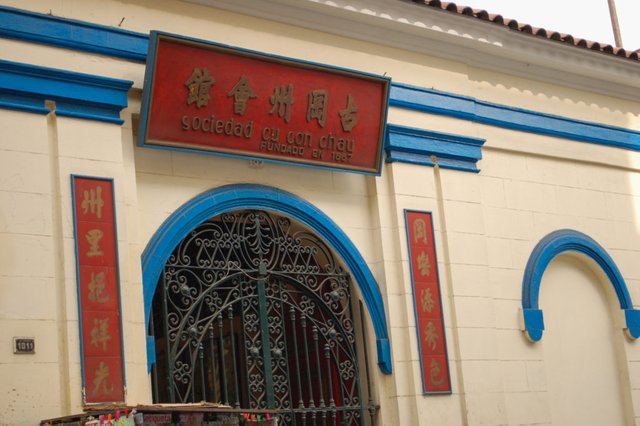
Kai Ping Society is another one of these mutuals, and Kai Ping is also located at southern China. This society isn't as established as Cu Con Chau and was situated inside a normal building.
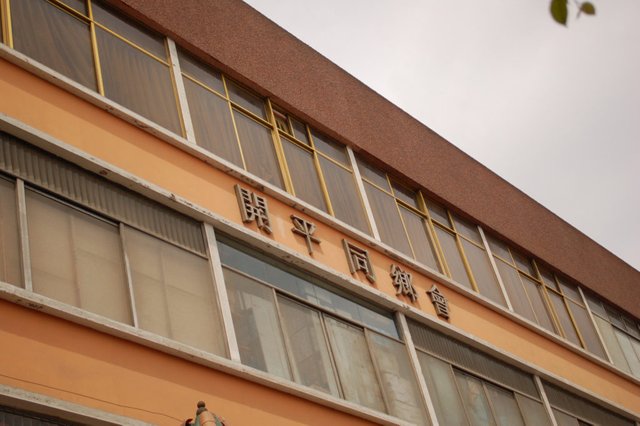
Of course it doesn't matter which China town in the world you go to, 99% of people go there for the food. In Peru, Chinese restaurants are called Chifa. This comes from the Chinese world 'chi fan' which literally translates to eat rice, meaning having dinner in Chinese. It's estimated that there are over 4000 Peruvian Chinese restaurants in Lima. If you ask me that sound's quite a lot for a city with 10m population. This one here, Salon Capon is one of the more popular chifas.
到唐人街絕大部分的人都是為了中國菜而來。 而利馬唐人街就已有四千多家中菜館。
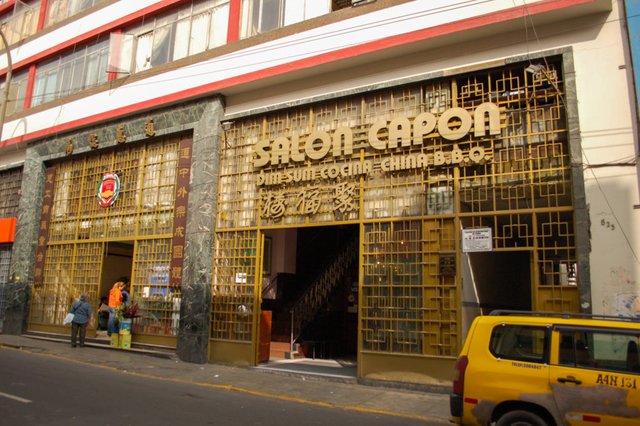
When I travel, I avoid eating Chinese food as what's the point of travelling all over the world to eat great food that you can get back at home? This time I made an exception as I wanted to see how Chinese food has become localised in Peru. In fact it was a spur of a moment decision as I just so happened to be there at lunch time. Normally under these circumstances, I would choose a restaurant that has the most locals, but locals were no where to be seen here. So I settled on one that looked very busy. After a short wait, I got a table. I remember the decor was very 'Chinese restaurant'. If you went to Chinese restaurants in London 20 odd years ago and still remember what they look like, then that's what it looks like here. If you don't, then let's just say it seems like this place hasn't had a makeover for a years. I didn't take any photos inside, nor of the food, but I can tell you, you didn't miss anything. Seems like Chinese Peruvians have developed a rather different taste for Chinese food. I'll stick to Chinese food back home.
平常我出門旅行都不會吃中菜。 這次作一個例外因為想看看中菜在秘魯發展如何。 我找了這一家較繁忙的餐館,還要等一陣子才有座位,裏面裝潢走懷舊風, 看來是幾十年來都沒有改變過。 至於食物方面,我只能說秘魯華人似乎發展了不一樣的中菜口味,沒有拍照大家也沒損失。
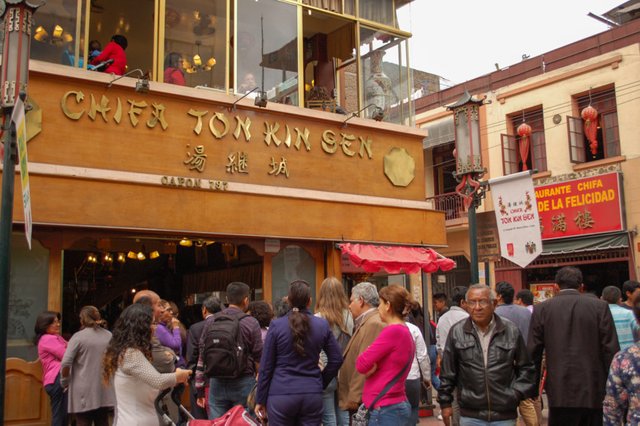
Out of the many Chinatowns around the world I've been to, this is one that has definitely left its mark on me.
我其實也見過不少各國的唐人街,但相信秘魯利馬令我最印象深刻。
Posted from my blog with SteemPress : http://livinguktaiwan.com/exploring-china-town-in-lima-%e8%b5%b0%e8%a8%aa%e7%a7%98%e9%ad%af%e5%88%a9%e9%a6%ac%e5%94%90%e4%ba%ba%e8%a1%97/
Check out all my travel posts here or visit Steemit Worldmap
And also my latest project @LadiesOfAsia where we share fun and cultural diversity across Asia Pacific.


Congratulations, Your Post Has Been Added To The Steemit Worldmap!
Author link: http://steemitworldmap.com?author=livinguktaiwan
Post link: http://steemitworldmap.com?post=exploringchinatowninlima-7dqo96d6yt
Want to have your post on the map too?
Downvoting a post can decrease pending rewards and make it less visible. Common reasons:
Submit
这地方 @joythewanderer 有去过哦。
Downvoting a post can decrease pending rewards and make it less visible. Common reasons:
Submit
是嗎? 我知她有去過隔壁 Bolivia
Downvoting a post can decrease pending rewards and make it less visible. Common reasons:
Submit
Yes, sure.
https://steemit.com/travel/@joythewanderer/trip-report-from-buenos-aires-to-lima-part-2
Downvoting a post can decrease pending rewards and make it less visible. Common reasons:
Submit
Hiya, just swinging by to let you know that this post made the Honorable mentions list in the Travel Digest #250.
Please drop by to check out all the rest of today's great posts and consider upvoting the Travel Digest if you like what we're doing.
Downvoting a post can decrease pending rewards and make it less visible. Common reasons:
Submit
So cool! Theres something very intersting about the chinese people in Peru as well.
At the end of the 19th century, there was something like a "gold run" in Peru for a material called guano - which its literaly the excrements of bats and other birds combined. They were found in caves and in remote islands close to Peru's coast. This was a very useful fertilizer to use in plantations.
A lot of chinese started to migrate to Peru in that time, but this didnt end well - a lot of them got stuck in their jobs, like a legal "slavery" working full day and night. Guano was exported all over the world and their prices sky rocket.
I think this ChinaTown in Lima was very influenced by this migration.
Anyway, amazing post, congratulations!
Downvoting a post can decrease pending rewards and make it less visible. Common reasons:
Submit
Thats an interesting bit of info thanks. Who would have thought shit would be worth so much!!!
Downvoting a post can decrease pending rewards and make it less visible. Common reasons:
Submit
不错,喜欢旅行的女孩,wonderful
Downvoting a post can decrease pending rewards and make it less visible. Common reasons:
Submit